VR headsets do not go viral because there are many difficulties the companies should overcome. One of them is that they use too many components. In this regard, Motorola and Verizon seem to have found the solution. These two, today, announced a “5G Neckband”. The key advantage of this product is its separate design. The neckband will handle tasks related to connectivity, processing, and battery while allowing headset makers to focus on the VR headsets themselves.
As we can see in the photos provided by
Engadget, the neckband is paired with a ThinkReality A3 headset. It comes out
way from Motorola’s parent company Lenovo. However, the 5G Neckband will
successfully pair and work with VR headsets of other brands as well. As said,
the main advantage is that the collar and pendant can provide the brains of the
operation for VR headsets. Apart from this, it will come with a number of
antennas, helping make those experiences much more portable. “We’re making 5G
wearable,” vice president of technology at Verizon Brian Mecum told Engadget.
In the photos, it looks like a necklace
with a big pendant. Such a design shouldn’t cause many inconveniences – just
imagine a camera bag is hanging around your neck. In terms of design, the
Motorola 5G Neckband comes in black with a red barrel on the right to connect
to headsets. It is also compatible with Qualcomm’s Snapdragon VR platform and
Microsoft’s Remote Network Driver Interface (RNDIS). Our protagonist also
offers USB-C and DP1.4 connections.
The pendant comes with dimensions of 2.1 x
3.8 inches (54 x 97mm) and weighs 3.5 ounces (100 grams). The main processing
unit sports a Snapdragon 8 Gen 1 processor, 5,000mAh battery, touchpad, SIM
card slot, and charging light indicator. Of course, as it will work with VR
headsets, there are myriads of sensors, including a gyroscope, accelerometer,
barometer, and GPS. For connectivity, the product supports a 5G network. The
corresponding antennas are embedded along the rest of the neckband. On the
rear, we can find a trapezoid-shaped module weighing 2.6 ounces (75 grams).
This module also contains antenna and stereo loudspeakers.
For the moment, Motorola and Verizon
decided to share only these details. Thus, we don’t know when the Motorola 5G
Neckband will go on sale and how much it will cost. Anyway, both are in talks
with major partners including “already in place retail channels that are doing
things in AR and VR,” Mecum said. Moreover, these companies are actively
negotiating with “some sports leagues” and “something pretty big with
education.”
Motorola and Verizon are not the pioneers
in this field. Other brands have already tried to come up with something
identical. However, they admit that products in this category need more data
and time to experiment and understand whether it is the best solution for the
VR headsets. Lastly, we should understand that VR and AR products are not as
popular as other devices such as smartphones. There are too many issues the
manufacturers should solve. But this 5G Neckband is a clear sign that the
brands are aware of existing problems and are working on them.





